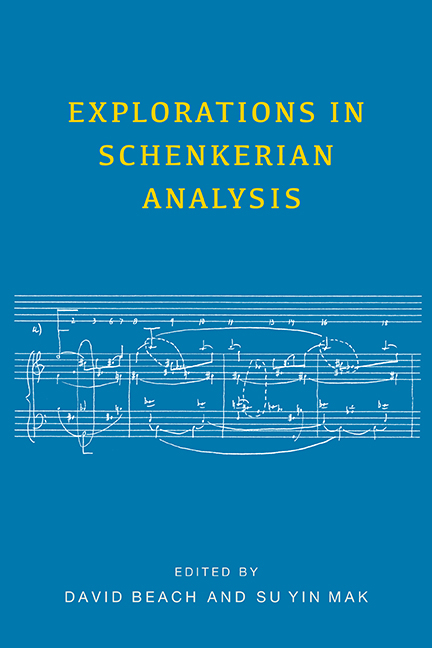Book contents
- Frontmatter
- Contents
- Preface
- Part One Eighteenth Century
- 1 A Letter about the C-Major Fugue from The Well-Tempered Clavier, Book 1
- 2 The Opening Tonal Complex of Bach's St. Matthew Passion: A Linear View
- 3 Recurrence and Fantasy in C. P. E. Bach's Rondo in G Major
- 4 Voice-Leading Procedures in Galant Expositions
- 5 The First Movements of Anton Eberl's Symphonies in E-flat Major and D Minor, and Beethoven's Eroica: Toward “New” Sonata Forms?
- Part Two Early Nineteenth Century
- Part Three Late Nineteenth Century
- Appendix: An Interview with Edward Laufer
- List of Contributors
- Index
5 - The First Movements of Anton Eberl's Symphonies in E-flat Major and D Minor, and Beethoven's Eroica: Toward “New” Sonata Forms?
from Part One - Eighteenth Century
Published online by Cambridge University Press: 28 June 2018
- Frontmatter
- Contents
- Preface
- Part One Eighteenth Century
- 1 A Letter about the C-Major Fugue from The Well-Tempered Clavier, Book 1
- 2 The Opening Tonal Complex of Bach's St. Matthew Passion: A Linear View
- 3 Recurrence and Fantasy in C. P. E. Bach's Rondo in G Major
- 4 Voice-Leading Procedures in Galant Expositions
- 5 The First Movements of Anton Eberl's Symphonies in E-flat Major and D Minor, and Beethoven's Eroica: Toward “New” Sonata Forms?
- Part Two Early Nineteenth Century
- Part Three Late Nineteenth Century
- Appendix: An Interview with Edward Laufer
- List of Contributors
- Index
Summary
I first became aware of the music of Anton Eberl (1765–1807), a contemporary of the “Viennese classics,” in 2013. Eberl was a composer whose first piano sonata was published as Mozart's last, under Mozart's name, even while Mozart was still alive; therefore it is presumed that Mozart must have approved of the deceptive attribution. Furthermore, Eberl's Symphony in E-flat Major was evaluated more highly than Beethoven's Eroica by contemporary critics when both were initially played in Vienna in 1805.
The following study, which focuses on two main examples drawn from Eberl's mature symphonies, seeks to demonstrate that our concept of “normative” sonata form, in terms of structure and design, is seriously incomplete. Taking the first movements of Eberl's symphonies in E-flat major and D minormajor as case studies, I shall argue that the sample of “known works” in the so-called classical style is still much too narrow for us to think that we have explored all of the possible models of sonata form. Consider the late Theophil Antonicek's 2012 comment on the symphonies of Antonio Cartellieri in the program booklet for the recording:
Cartellieri's symphonic movements have in common the recapitulation principle— which means that the initial part returns at the conclusion of the movement, as is the case in the classical symphonic movement. What occurs in the middle part of the movement, however, does not correspond to the scheme of the “classical” symphony. A really distinct secondary complex does not come into view; nor does a development like those by Haydn or Beethoven take place.
Antonicek's description may or may not be true, but, at this point it is difficult to verify because none of the scores of Cartellieri's symphonies have been published in modern editions. Yet it is obvious from the single available recording that Cartellieri was an accomplished composer who may well have influenced— and been influenced by—Beethoven. During the intermission at the premiere of Cartellieri's oratorio Gioas—Re di Giuda (Jesus—King of Juda), which took place on March 29–30, 1795, at the Wiener Burgtheater, Beethoven played his First Piano Concerto in his Viennese debut as a composer.
- Type
- Chapter
- Information
- Explorations in Schenkerian Analysis , pp. 61 - 96Publisher: Boydell & BrewerPrint publication year: 2016

